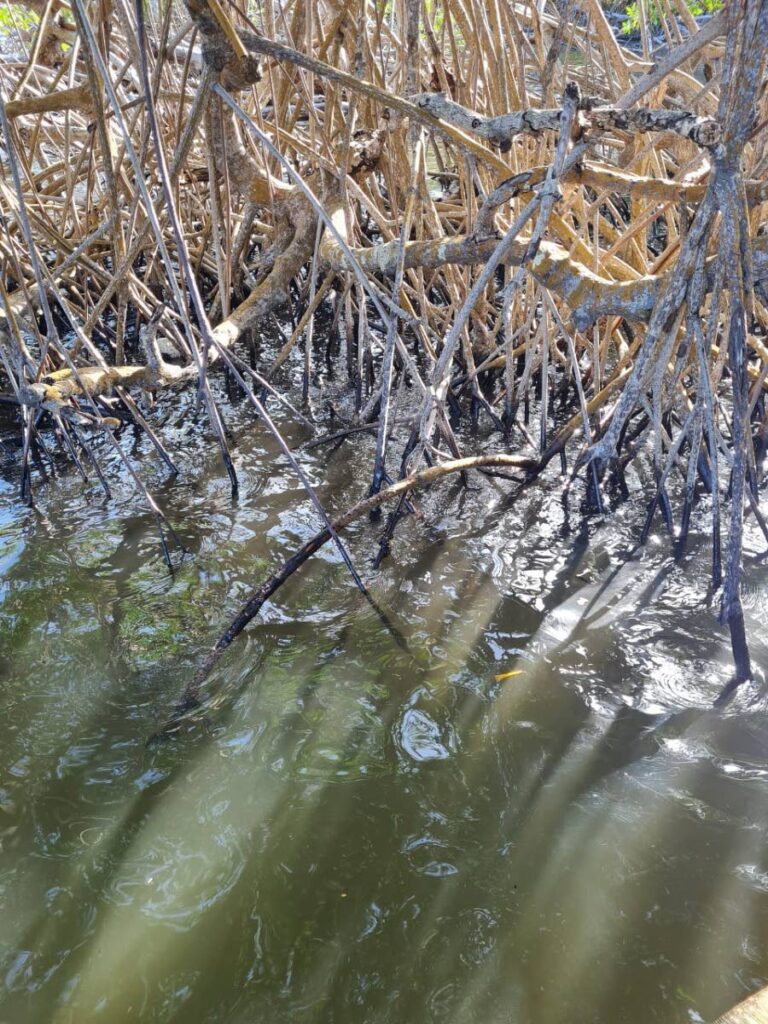IMA probes eco impact of oil spill, Petit Trou lagoon affected

The Institute of Marine Affairs on Saturday sent a team to conduct initial ecological assessments of mangroves, beaches and other areas affected by the oil spill in Tobago.
On February 7, an abandoned vessel, Gulf Stream, capsized nearshore Cove Bay on the Atlantic side of Tobago. The vessel has since been leaking an oily substance into the ocean, leaving environmental stakeholders concerned about the impact. The tourism blow is also being weighed as several beaches have been deemed off-limits by the Tobago House of Assembly, while clean-up operations are ongoing. Economically, the fishing industry is also being affected.
The IMA team analysed data from satellite imagery product providers such as The National Oceanic and Atmospheric Administration (NOAA) to track movement of the oil-like substance over distance and time, as well as mined years of rich historical data amassed by IMA for monitoring Tobago's marine and coastal environments.
From this, preliminary priority sites were determined for: where IMA technicians should collect oil samples; those most vulnerable or susceptible areas (based on both ecological and socio-economic value) impacted by the hazard; as well as areas for restoration and rehabilitation.
At one such site, for example, the team observed oil-like substance entering the sheltered lagoon area in Petit Trou, inundating the sensitive mangrove ecosystem. This once thriving stand began exhibiting dieback prior to the spill incident and so is now considered extremely vulnerable.
The team, headed by IMA Director Dr Ava Maxam, met with the Chief Secretary, Farley Augustine; Allan Stewart, the head of the Tobago Emergency Management Agency (TEMA); Marc Rudder, Chief Technical Officer at the Ministry of Energy and Energy Industries (MEEI); Gillian Stanislaus, Environmental Programme Officer II at the Environmental Management Authority (EMA) in Tobago; and other members of the response team, which comprised officials from Heritage Petroleum Company Ltd, the Trinidad and Tobago Coast Guard and others, to report their initial findings and provide advice on how cleanup activities should proceed given that some of the affected areas are ecologically sensitive, such as the nesting grounds of the critically endangered Hawksbill turtle.
On Sunday, the IMA also collected samples for oil fingerprinting, that is, to determine whether there is a link between affected areas and effluent emanating from the source at the overturned vessel. This is in addition to samples previously received on February 8 from Coast Guard. Along with oil fingerprinting, samples will be continuously processed for dissolved and dispersed petroleum hydrocarbons (DDPH) to determine the concentration of hydrocarbons in the water column over time, until results indicate a return to pre-incident levels.
This monitoring will form part of IMA's plan to recover and restore the affected sites.


Comments
"IMA probes eco impact of oil spill, Petit Trou lagoon affected"